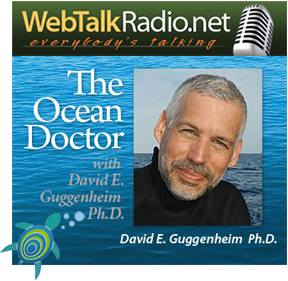Lights, Camera, Walrus! From Beneath the Ice to the Big Screen
January 10, 2011: Award-winning underwater cinematographer, Adam Ravetch works in one of the most unforgiving, hostile environments imaginable: Under the ice in the Arctic. And with camera in hand, he pursues some of the most elusive and dangerous Arctic life, including polar bears and walrus. The critically-acclaimed film, “Arctic Tale” narrated by Queen Latifah told the story of a polar bear cub and a walrus pup against the backdrop of a changing Arctic environment and showcased 15 years worth of Adam’s incredible footage and insights. Adam joins us this week to tell us how he did it, and what’s next!
The Ocean Doctor airs weekly on WebTalkRadio.net. Want to listen on your iPod, iPhone or mp3 player? Download the mp3 file or subscribe on iTunes and don’t miss a single episode. See the complete list of episodes.
Follow The Ocean Doctor on Twitter — Become a Fan on Facebook!
Submit a question and I’ll try to answer it on the air. Even better, record your question or comment on our special message line and I might play it on the air. Call: (805) 619-9194. You can also leave questions and comments for this episode below.
Like the show? Learn how to become a sponsor. Read more
Podcast: Play in new window | Download

